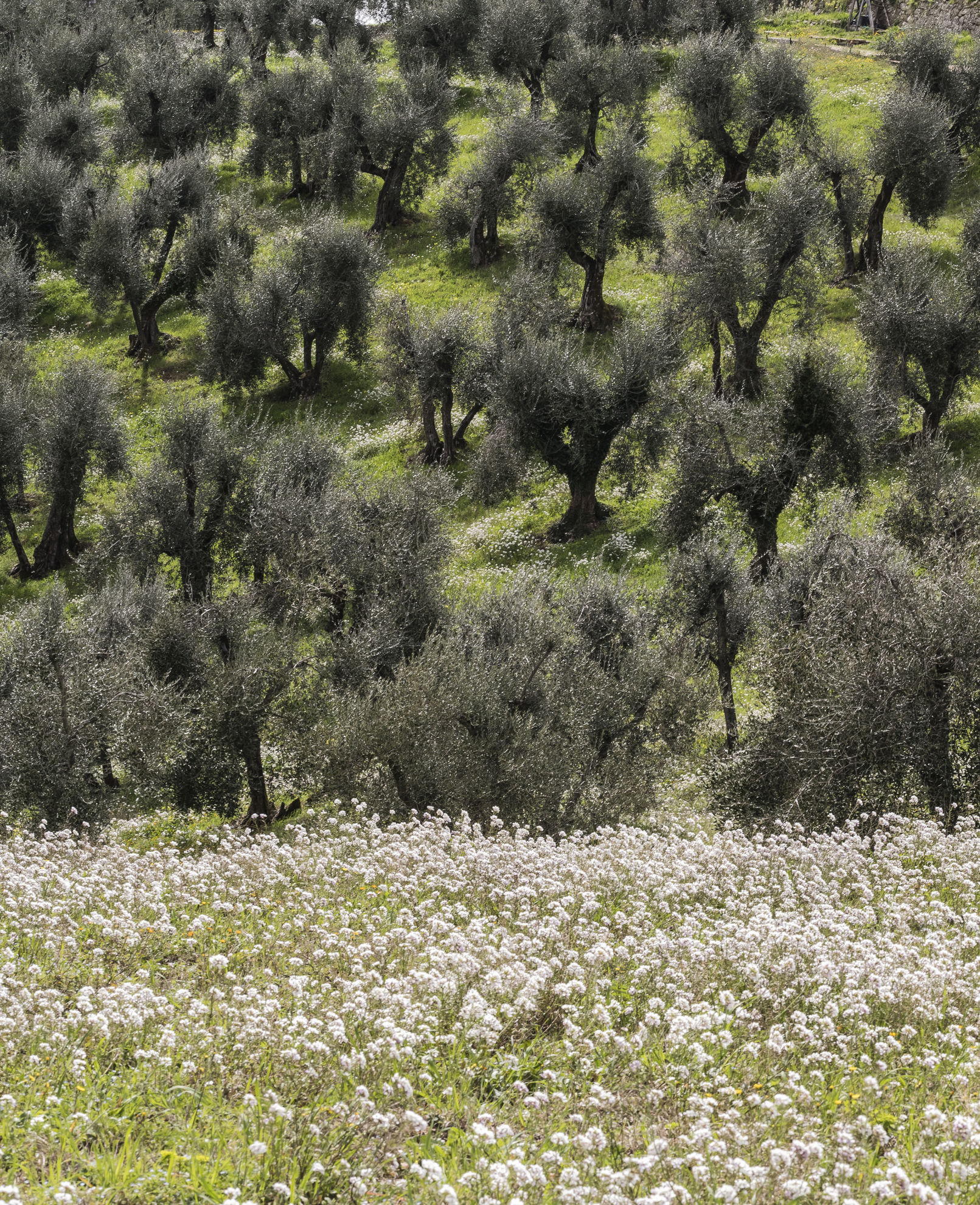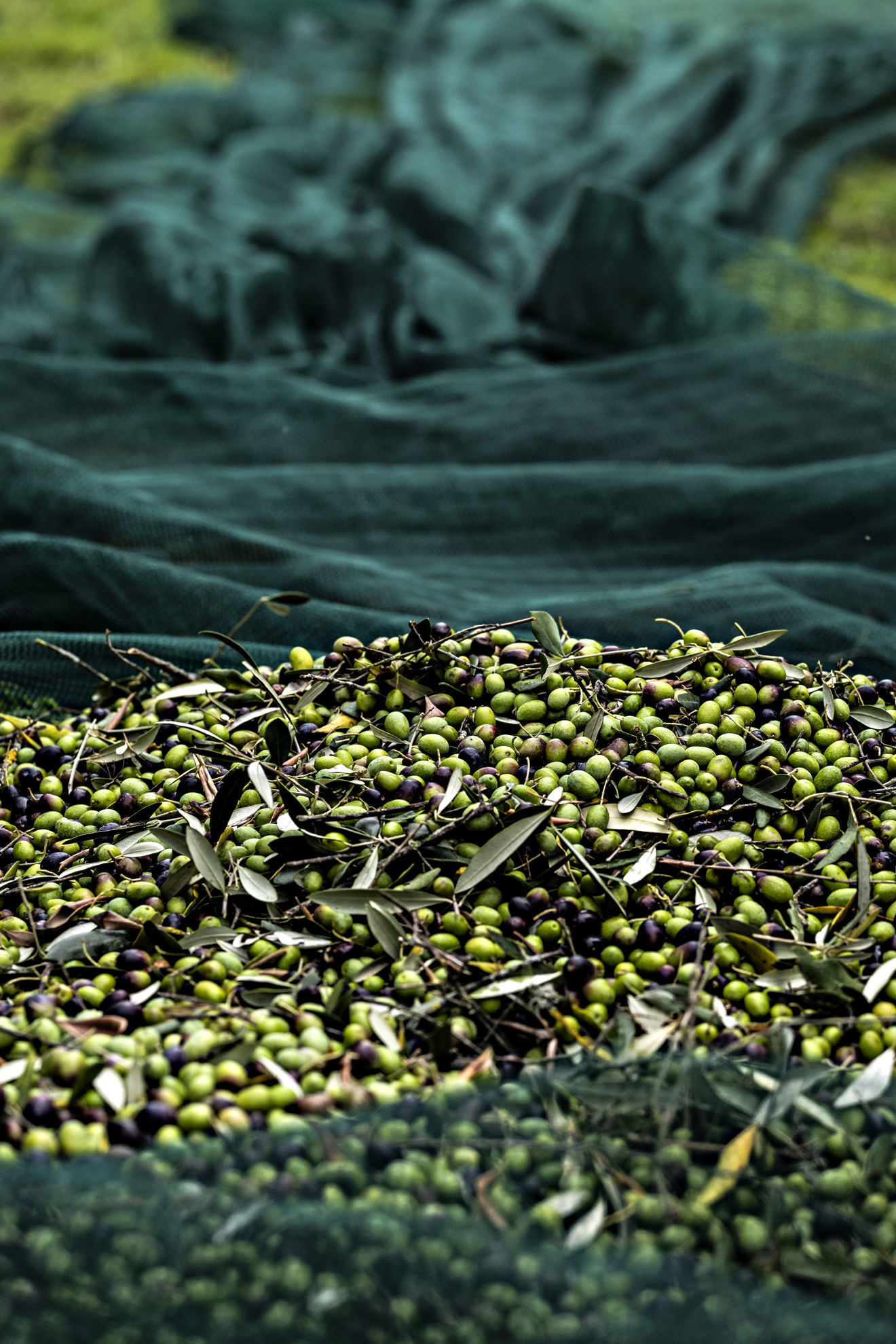
One of the most important aspects of ensuring the health and productivity of your olive trees is olive tree fertilization. Knowing when to fertilize olive trees and how to do it properly is essential to promote balanced growth, abundant flowering, and high-quality fruits — the foundation for producing an exceptional extra virgin olive oil.
In this guide, you’ll learn not only the ideal times for fertilizing olive trees, but also which nutrients are essential for the plant and how to apply them at the right moment.
When to Fertilize Olive Trees: Key Stages in the Growth Cycle
Fertilizing olive trees isn’t a random process: it should follow the plant’s natural growth cycle, intervening at moments when it can absorb nutrients most effectively. The tree’s nutrient needs and absorption capacity change throughout the year:
-
Winter: vegetative rest; the olive tree slows its metabolic activity.
-
Spring: period of vegetative growth, flowering, and fruit set.
-
Summer: fruit development and oil synthesis within the drupes.
-
Autumn: after harvest, the olive tree restores its nutrient reserves in preparation for winter dormancy.
During each phase, fertilization should be integrated with complementary agronomic practices such as weed control, pruning of olive trees, green manure, and soil management. These practices directly influence the plant’s ability to absorb and use nutrients efficiently.
Winter Fertilization: Preparing the Soil and Roots
At the end of autumn and the beginning of winter, the olive tree enters its resting phase and significantly reduces nutrient uptake.
In this period, rather than directly feeding olive trees, it’s best to improve soil fertility. The best fertilizer for olive trees during this season should focus on:
-
Organic matter supply (such as well-rotted manure or compost), which decomposes slowly and enriches the soil.
-
Shallow tilling to enhance soil aeration and water infiltration.
These agronomic practices, chosen based on soil type, create the ideal conditions for strong root activity once growth resumes in spring.
Spring Fertilization: Boosting Flowering and Fruit Set
As temperatures and sunlight increase, the olive tree resumes active growth. This is when you should feed olive trees with the right nutrients to stimulate new shoots and support flowering.
Through the use of a balanced fertilizer for olives, supply key elements such as:
-
Nitrogen (N): essential for vegetative growth and leaf development.
-
Phosphorus (P): promotes root development and energy processes, improving resistance to stress.
-
Boron (B): crucial for pollen fertility and fruit set.
-
Calcium (Ca): important for cell division and fruit quality.
At the end of winter and beginning of spring, green manure can also be incorporated into the soil. This organic matter decomposes quickly, releasing nitrogen and other nutrients that sustain vegetative activity.
Summer Fertilization: Supporting Fruit Growth and Oil Formation
During summer, the tree focuses its energy on fruit enlargement and oil synthesis. Potassium (K) plays a fundamental role here: it improves resistance to drought stress and enhances fruit quality. In areas with limited rainfall, foliar feeding can be particularly effective for fertilizing olive trees in this stage, ensuring nutrients reach the plant even under dry conditions.
Autumn Fertilization: Replenishing the Tree’s Reserves
After the olive harvest, the tree has used up a large portion of its nutrient reserves to support fruit growth and oil production, a highly energy-demanding process.
At this stage, the tree must regenerate its reserves and prepare for the next season, particularly for flower bud differentiation, which occurs between autumn and winter.
The ideal fertilizer for olives at this time should contain:
-
Potassium (K): aids in the accumulation of reserves, strengthens cell walls, and improves stress resistance.
-
Boron (B): together with trace elements, supports bud differentiation and ensures the fertility of the next bloom.
Foliar fertilization is especially recommended during this period, as the olive tree’s root activity decreases before dormancy.
Autumn is also the ideal time to plant a cover crop, as seasonal rains promote seed growth. This practice helps:
-
Protect the soil and reduce erosion.
-
Stabilize the terrain and improve structure through natural porosity.
-
Increase soil fertility by adding organic matter and nutrients.
-
Limit weed growth naturally.
-
Improve water management by enhancing infiltration in winter and reducing evaporation in summer.


How to Fertilize Olive Trees: Application Techniques
In olive tree fertilization, the timing, method, and quantity of nutrients applied are crucial for obtaining strong, balanced, and productive plants.
Fertilizer application must follow the physiological and seasonal patterns of the olive tree, ensuring nutrients are available precisely when the plant needs them most.
Common Fertilization Mistakes to Avoid
Even with the best intentions, some common mistakes can harm your olive trees during fertilization:
-
Over-fertilizing: excessive nutrients, especially nitrogen, can disrupt the olive’s natural cycle, encourage alternate bearing, or increase vulnerability to pests and stress.
-
Applying fertilizer at the wrong time: fertilizing too early or late can result in wasted nutrients or even harm the plant, for example by stimulating growth before frost.
-
Neglecting irrigation: water availability is crucial for nutrient absorption. Poor irrigation reduces both the yield and the quality of olive oil.
By following these guidelines, fertilizing olive trees becomes a safe, effective, and sustainable practice.
The Best Fertilizer for Olive Trees: How to Choose It
There’s no single formula for the best fertilizer for olive trees — the right choice depends on the time of application, the production stage, soil characteristics, and the plant’s needs.
The real difference comes from understanding and observing the tree throughout the year. Careful monitoring helps identify which nutrients are needed and in what amounts, preventing waste and avoiding excess that can harm the plant.
Equally important is selecting the proper application method for each season and adopting sustainable agricultural practices that respect both the tree and the surrounding environment.
Conclusion: Fertilizing Olive Trees for Healthy Fruit and Quality Olive Oil
Olive tree fertilization is the secret to vigorous plants, healthy olives, and abundant harvests.
Laudemio Frescobaldi represents the highest expression of this philosophy, a premium extra virgin olive oil born from respect for the plant and for nature itself, produced through responsible agronomy that preserves soil fertility and promotes biodiversity.
Caring for the cultivation of olive trees with attention, passion, and consistency ensures a healthy, long-lasting, and environmentally conscious production. Choose your fertilizer for olives carefully and follow the natural cycles of the plant: your choices will make all the difference in the quality of your harvest.